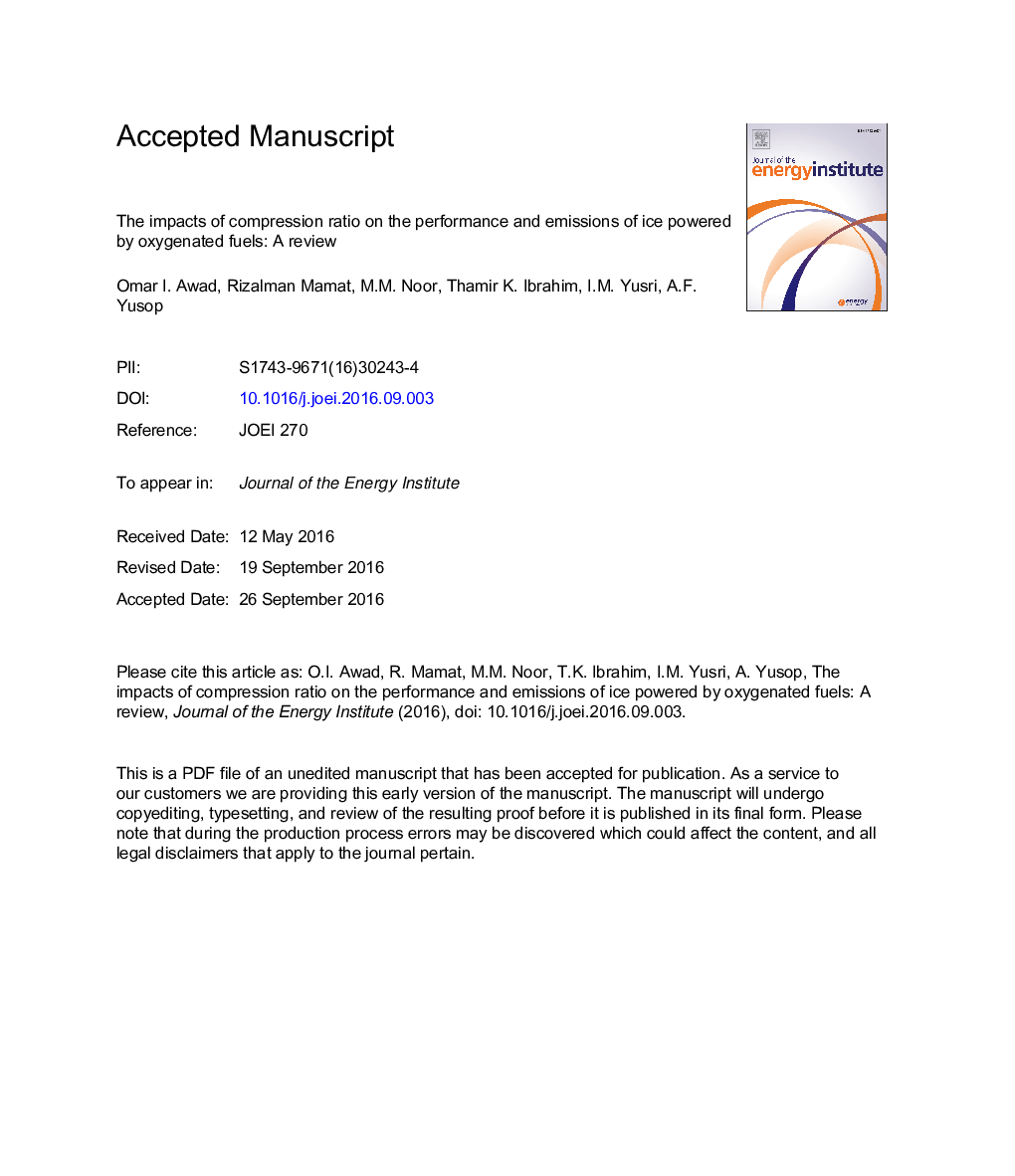| کد مقاله | کد نشریه | سال انتشار | مقاله انگلیسی | نسخه تمام متن |
|---|---|---|---|---|
| 8108712 | 1522245 | 2018 | 33 صفحه PDF | دانلود رایگان |
عنوان انگلیسی مقاله ISI
The impacts of compression ratio on the performance and emissions of ice powered by oxygenated fuels: A review
ترجمه فارسی عنوان
تاثیرات نسبت فشرده سازی به عملکرد و انتشار یخ های سوخت شده توسط سوخت های اکسیژن: یک بررسی
دانلود مقاله + سفارش ترجمه
دانلود مقاله ISI انگلیسی
رایگان برای ایرانیان
کلمات کلیدی
سوخت اکسیژن موتور احتراق جرقه موتور احتراق فشرده، سوخت اتانول، انتشار موتور،
موضوعات مرتبط
مهندسی و علوم پایه
مهندسی انرژی
مهندسی انرژی و فناوری های برق
چکیده انگلیسی
Energy sources are becoming a governmental issue, with cost and stable supply as the main concern. Oxygenated fuels production is cheap, simple and eco-friendly, as a well as can be produced locally, cutting down on transportation fuel costs. Oxygenated fuels are used directly in an engine as a pure fuel, or they can be blended with fossil fuel. The most common fuels that are conceded under oxygenated fuels are ethanol, methanol, butanol Dimethyl Ether (DME), Ethyl tert-butyl ether (ETBE), Methyl tert-butyl ether (MTBE) and biodiesel that have attracted the attention of researchers. Due to the higher heat of vaporization, high octane rating, high flammability temperature, and single boiling point, the oxygenated fuels have a positive impact on the engine performance, combustion, and emissions by allowing the increase of the compression ratio. Oxygenated fuels also have a considerable oxygen content that causes clean combustion. The aim of this paper was to systematically review the impact of compression ratio (CR) on the performance, combustion and emissions of internal combustion engines (ICE) that are operated with oxygenated fuels that could potentially replace petroleum-based fuels or to improve the fuel properties. The higher octane rating of oxygenated fuels can endure higher compression ratios before an engine starts knocking, thus giving an engine the ability to deliver more power efficiently and economically. One of the more significant findings to emerge from this review study was the slight increases or decreases in power when oxygenated fuel was used at the original CR in ICE engines. Also, CO, HC, and NOx emissions decreased while the fuel consumption (FC) increased. However, at higher CR, the engine performance increased and fuel consumption decreased for both SI and CI engines. It was seen the NOx, CO and CO2 emissions of oxygenated fuels decreased with the increasing CR in the SI engine, but the HC increased. Meanwhile, in CI engine, the HC, CO and NOx decreased as the CR increased with biodiesel fuel.
ناشر
Database: Elsevier - ScienceDirect (ساینس دایرکت)
Journal: Journal of the Energy Institute - Volume 91, Issue 1, February 2018, Pages 19-32
Journal: Journal of the Energy Institute - Volume 91, Issue 1, February 2018, Pages 19-32
نویسندگان
Omar I. Awad, Rizalman Mamat, M.M. Noor, Thamir K. Ibrahim, I.M. Yusri, A.F. Yusop,
